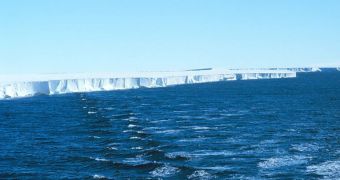For many years, climate change deniers have argued that global warming does not exist, because the East Antarctic Ice Sheet (EAIS) is getting thicker instead of melting. Unfortunately, they are now proven wrong by the latest scientific measurement conducted in the area.
Apparently, climate change has made its way to those areas as well, investigators say. The phenomenon is also more intense in its effects that climate scientists first predicted with computer simulations.
Analyzing the EAIS is critically-important, and then some. If they ices it contain somehow melt and flow into the ocean, they will rise global sea levels by about 60 meters, essentially making away with the world's most populated areas.
Until now, these ice sheets have remained stable, given that temperatures in East Antarctica have remained below freezing point while the West Antarctic was getting warmer. Experts used to think that this situation will remain unchanged over the upcoming few centuries.
But the most recent field-based studies indicate that the EAIS is beginning to respond to rising temperatures brought on by climate change. This conclusion is based on investigations of how the ice sheet responded some 20,000 years ago, at the end of the last ice age.
One of the reasons why investigators cannot readily determine the behavior of this massive ice mass is because they don't know the mechanisms draining the ice in the Southern Ocean in their entirety.
They do know that the coastal perimeter of East Antarctica is one avenue ice takes in reaching the ocean. The second one is through large outlet glaciers that flow into the water. The amount of ice that escapes through these portals has until now been unknown.
In a new paper published in the latest issue of the esteemed scientific journal Geology, experts detail their most recent studies of these large ice streams. ANSTO expert Dr David Fink and colleagues Dr Duanne White and associate professor Damian Gore of Macquarie University worked on the study.
“These outlet glaciers can quickly move ice from the ice sheet to the coast through these basins and are thus a strong linkage between the ice sheet and the ocean, providing a means of more rapidly transferring changes in oceanic and atmospheric conditions to changes in the size of the ice sheet than would otherwise be expected,” Dr White says.
“However, the large area, remoteness and complexity of the ice streams means they have been difficult to study before now,” the expert goes on to say, quoted by Daily Galaxy.
The main conclusion of the Geology paper is that the EAIS is becoming increasingly sensitive to the joint influence of global warming and climate change. This implies that sea levels may start growing faster than originally anticipated.

 14 DAY TRIAL //
14 DAY TRIAL //